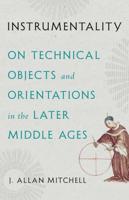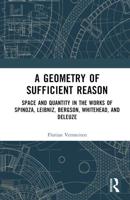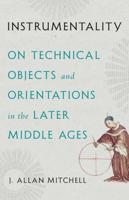Publisher's Synopsis
English summary: The book contextualizes and analyzes the unknown or unpublished writings of the Carniolan-Slovenian Jesuit missionary Marcus Antonius Kappus (1657-1717). He is the first Carniolan known to have been sent as a Jesuit missionary to the Spanish Viceroyalty of "Nueva Espana" in North America. Kappus originally applied to serve as a missionary in the Orient, but was selected and sent to Sonora in Mexico, bordering today with the federal state of Arizona in the United States of America, instead. The book focuses on the social context in Carniola/"Krain" at the time of the late Baroque, particularly on Kappus's colonial letters, written to his superiors, peers, family and friends back home in the Habsburg Empire, before and during his missionary work. The text is complemented by photos, maps, original documents and other visual materials. A central topic of the book is the discussion of the context and process of geographical discovery, and the mapping of California, to which both Eusebio Francisco Kino and, indirectly, also Kappus contributed. The first section of the book discusses his 'Indian letters' ("lettere indipetae") to the Jesuit order, religious vows taken before his departure, an important letter by Kappus in Spanish, and the map of California drawn by Father Kino, which Kappus sent to Vienna, publicizing Kino's major discovery that California is not an island. Owing to this map, which was later republished many times, the non-insular state of California became known in the Habsburg Monarchy and in Europe. In the second section Kappus's letters from North America home to Carniola/Slovenia, written in Latin and German, are transcribed, translated and analyzed. German description: Das Buch kontextualisiert und analysiert unveroffentlichte Schriften des krainisch-slowenischen Jesuitenmissionars Marcus Antonius Kappus (1657-1717). Er ist der erste Krainer, von dem bekannt ist, dass er als jesuitischer Missionar in das spanische Vizekonigreich "Nueva Espana" in Nordamerika entsandt wurde. Kappus bewarb sich ursprunglich als Missionar fur den Orient, wurde aber stattdessen nach Sonora in Mexiko geschickt, das heute an den US-Bundesstaat Arizona grenzt. Das Buch konzentriert sich auf den sozialen Kontext des spatbarocken "Krain", insbesondere auf die Kolonialbriefe, die Kappus vor und wahrend seiner Misson an die Vorgesetzten, Kollegen, Familie und Freunde im heimatlichen Habsburgerreich schrieb. Erganzt wird der Text durch Fotos, Karten, Originaldokumente und weiteres Bildmaterial. Ein Zentralthema ist die Auseinandersetzung mit der geographischen Entdeckung und Kartierung Kaliforniens, zu der sowohl Eusebio Francisco Kino als auch, indirekt, Kappus beigetragen haben. Der erste Teil des Buchs behandelt seine "indischen Briefe" ("lettere indipetae") an den Jesuitenorden, religiose Gelubde, die vor seiner Abreise abgelegt wurden, sowie einen wichtigen Brief von Kappus auf Spanisch; ebenso die von Pater Kino gezeichnete Landkarte von Kalifornien, die zeigt, dass Kalifornien keine Insel ist, und von Kappus zur Veroffentlichung nach Wien geschickt wurde. Durch diese vielfach neu aufgelegte Karte wurde der nichtinsulare Status Kaliforniens in der Habsburgermonarchie und in Europa bekannt. Der zweite Teil transkribiert, ubersetzt und analysiert die von Kappus auf Latein und Deutsch verfassten Briefe aus der neuen Welt nach Krain/Slowenien.









